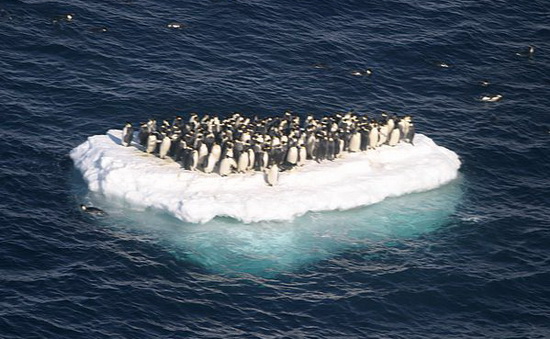Penguins are a group of aquatic, flightless birds living almost exclusively in the southern hemisphere, especially in Antarctica. Although all penguin species are native to the southern hemisphere, they are not found only in cold climates, such as Antarctica. In fact, only a few species of penguin live so far south. Several species are found in the temperate zone, and one species, the Galápagos Penguin, lives near the equator. The territory of Antarctica is not on the list, because Antarctica is not a country.
1. Ecuador (Galapagos Islands)
 |
| Galapagos Penguins photo source |
There are 17 species worldwide and 2 species which occur in Ecuador: Humboldt Penguin and Galapagos Penguin.
* The Galapagos Penguin is a penguin endemic to the Galapagos Islands. It is the only penguin that lives north of the equator in the wild; it can survive due to the cool temperatures resulting from the Humboldt Current and cool waters from great depths brought up by the Cromwell Current.
2. Peru
 |
| Habitats of Humboldt Penguins in Peru source |
There are 2 species of penguins which occur in Peru: King Penguin and Humboldt Penguin.
* The Humboldt penguin is often called the Peruvian penguin, although they are also found in Chile. It is found on the rugged coast and offshore islands of Chile and Peru. The penguin is named after the cold water current it swims in, which is itself named after Alexander von Humboldt, an explorer.
3. Chile
 |
| Magellanic penguin with six chicks photo source |
* The Magellanic Penguin is a South American penguin, breeding in coastal Argentina, Chile and the Falkland Islands, with some migrating to Brazil where they are occasionally seen as far north as Rio de Janeiro.
4. Argentina
 |
| An Emperor Penguin can hold its breath for 20 minutes, and dive to depths of over 550 m (1,800 ft) source |
* The Emperor Penguin is the tallest and heaviest of all living penguin species. The male and female are similar in plumage and size, reaching 122 cm (48 in) in height and weighing anywhere from 22 to 45 kg (49 to 99 lb).
5. Uruguay
 |
| King Penguin and his chicks photo source |
* The King Penguin is the second largest species of penguin at about 11 to 16 kg (24 to 35 lb), second only to the Emperor Penguin.
6. Brasil
 |
| Penguin colony near the equator, Brasil photo source |
7. Angola
 |
| African Penguins photo source |
* Also known as the Black-footed Penguin, African Penguin is a species of penguin, confined to southern African waters. It is also widely known as the "Jackass" Penguin for its donkey-like bray, although several species of South American penguins produce the same sound.
8. Namibia
 |
| Little Penguins photo source |
* The Little Penguin is the smallest species of penguin. The penguin, which usually grows to an average of 33 cm (13 in) in height and 43 cm (17 in) in length, is found on the coastlines of southern Australia, New Zealand and Namibia, with possible records from Chile.
9. South Africa
 |
| Habitats of African Penguins in South Africa source |
* The African Penguin population is in rapid decline in South Africa. In 2008 the population reached an all-time low of 26,000 breeding pairs, down from an estimated two million pairs at the turn of the 20th century.
10. Mozambique
 |
| African penguin chicks moulting photo source |
11. Australia
 |
| Distribution of Little Penguin: Australia & New Zealand source |
12. New Zealand
 |
| Pair of Yellow-eyed Penguins photo source |
* The Yellow-eyed Penguin or Hoiho is a penguin native to New Zealand. Previously thought closely related to the Little Penguin, molecular research has shown it more closely related to penguins of the genus Eudyptes. Like most other penguins, it is mainly piscivorous.










.jpg)




Thanks for sharing your thoughts. Keep up the good job in posting very good topics.
ReplyDelete